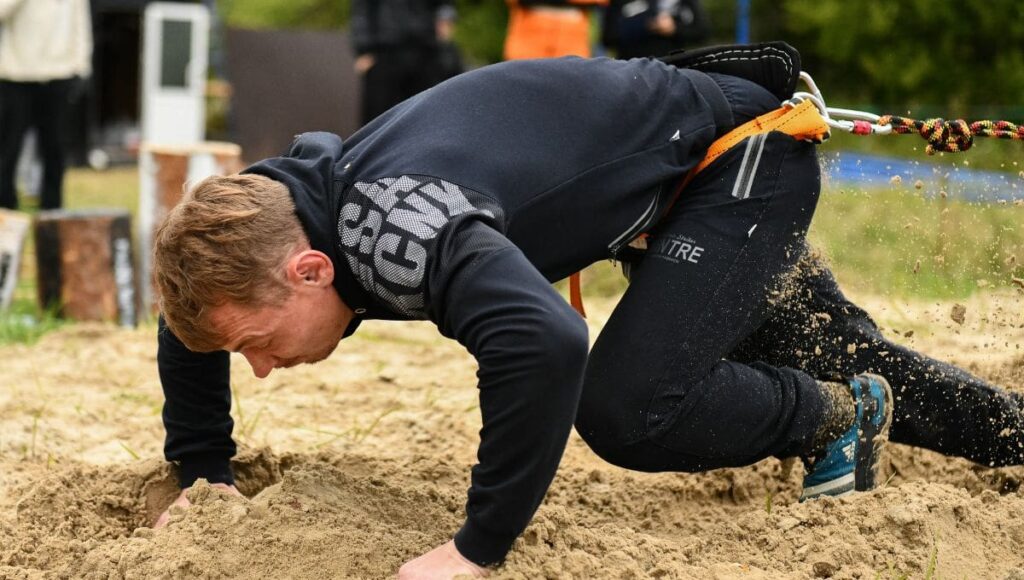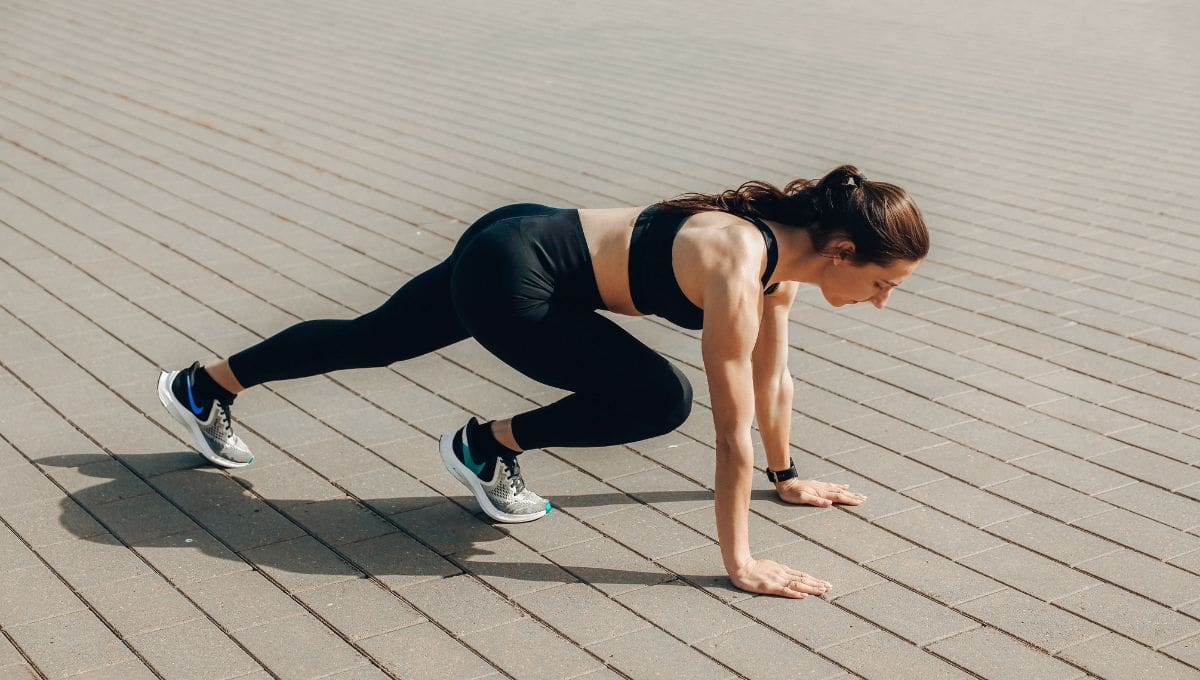What happens to your body when you do animal flow for 30 days? How much would you improve in terms of mobility, strength and health overall? Let’s dig more into it.
Animal Flow is a unique and dynamic form of fitness that combines elements of ground-based movement, bodyweight exercises, and fluid transitions inspired by animal-like movements. Developed by fitness expert Mike Fitch, Animal Flow is designed to improve strength, flexibility, mobility, and overall body control. The practice incorporates a series of exercises and movements that mimic the way animals move in nature.
Key features of Animal Flow include:
- Animal-Inspired Movements: The exercises in Animal Flow are often named after animals and are designed to replicate their movements. Examples include bear crawls, crab walks, ape reaches, and scorpion reaches.
- Ground-Based Flow: Unlike traditional exercises that may be performed standing, Animal Flow emphasizes ground-based movements. This requires engagement of multiple muscle groups, enhancing overall functional fitness.
- Flowing Transitions: One of the defining aspects of Animal Flow is the seamless transition between movements. Practitioners are encouraged to create fluid, continuous sequences, promoting improved coordination and body awareness.
- Bodyweight Training: Animal Flow is primarily a bodyweight-based workout, making it accessible to a wide range of fitness levels. It challenges strength, stability, and flexibility without the need for additional equipment.
- Core Engagement: Many Animal Flow movements heavily engage the core muscles, contributing to core strength and stability. The dynamic nature of the exercises also helps enhance overall body control.
- Mind-Body Connection: The practice emphasizes a mind-body connection, encouraging individuals to be mindful of their movements and focus on proper form and alignment.
 Source: Konstantin Mishchenko on Pexels
Source: Konstantin Mishchenko on PexelsAnimal Flow classes or workouts are often structured as a series of flows, where participants move through different positions and transitions. The goal is to improve overall movement patterns, mobility, and functional strength while providing a fun and engaging workout experience.
Whether you’re a fitness enthusiast looking for a new challenge or someone seeking a more dynamic and unconventional approach to exercise, Animal Flow can offer a refreshing and effective way to enhance your fitness level and movement capabilities.
10 Exercises You Probably Overlooked for Total Performance
Now, to try and find out what happens to your body when you do animal flow for 30 days straight, you got two options:
- Either you do it yourself and see the results
- Or you read and watch what happened to other people and can try and assume a few things that could happen to you as well
Since this is an online article, we are going to go for the latter option and check out a person who did animal flow for 30 days. More precisely, Tayo from Pushment, a YouTube channel focused on challenged oneself to do and learn different things in a short period of time.
Let’s check it out.
 Source: RDNE Stock project on Pexels
Source: RDNE Stock project on PexelsWhat Happens to Your Body When You Do Animal Flow for 30 Days?
You can watch Tayo’s animal flow video and challenge throughout the 30 days lower in this article. But remember that we said animal flow can be done by anyone, regardless of their fitness level?
That is what is good about what Tayo did. He is not an expert in the subject matter. He considers himself a complete beginner and he is not extremely fit or muscular per se.
This can help us identify what could happen to your body as well in case you decide to do animal flow for 30 days. If you are more fit, the results could be even better? Maybe.
Tayo did 30 minutes of animal flow every day for 30 days without any experience to unlock his mobility. After 10 days, he was able to increase the speed at which he would do some movements. “Things are running pretty well.”
According to Tayo, doing the animal flow was not only good for his health and mobility, but also fun as it awakened his inner child. By the end of the 30th day, you could see a vast improvement in how he moved. Watch the video below.
We at BOXROX also have written before about animal movements. Check out the link below.
The Only 5 Animal Movements You Need
If you want to follow something similar to what Tayo did, they separated all 30 days into phases with links to videos for you to get better and better each time. They are as follows:
The final test:
The best Primal Flow exercises that can be done anywhere!
Day 1-10: Basics
30-minute Natural Movement Practice: Ground Flow
LEARN TO FLOW: Movement Class for Mobility & Strength [Yoga / Primal Movement / Animal Flow]
Animal Flow Workout – 15 Minute Bodyweight Workout (Follow Along)
Day 11-20: Practice
30-minute Natural Movement Practice: Ground Flow
30 MOVES IN 30 MINUTES | At-Home Bodyweight Workout
20 Minutes Primal Functional Movement Yoga Practice
These 9 ANIMAL MOVEMENT Exercises are OUR BEST OF!
MOVEMENT meets HIIT: 30-minute Natural Movement Workout (No Equipment)
10 Different Animal Walk Exercises
Day 21-30: Skills
Learn How To Flow: Locomotion, Animal Flow, Primal Movement
5 Primal Movements you NEED to do
Advanced ANIMAL FLOW Movements | FrancheskaFit
Crawling movements, often overlooked in traditional fitness routines, offer a transformative approach that extends beyond the realms of conventional exercises. Firstly, these primal patterns engage the body in a holistic manner, activating a diverse range of muscles and promoting functional strength. Unlike isolated exercises that target specific muscle groups, crawling requires the synchronization of various muscle chains, fostering a comprehensive muscular engagement. The intricate interplay between the upper and lower body during crawling patterns ensures that no muscle group is left untouched, promoting a balanced and well-rounded approach to fitness.
Secondly, crawling movements contribute significantly to mobility and flexibility. The dynamic nature of these patterns challenges the body to move in various planes, enhancing joint mobility and range of motion. As individuals navigate through crawling sequences, they naturally incorporate movements that stretch and strengthen muscles, tendons, and ligaments. This focus on mobility not only improves overall flexibility but also mitigates the risk of injuries by promoting joint health and functional movement patterns.
Moreover, crawling exercises provide a cardiovascular and endurance boost. The continuous and rhythmic nature of crawling elevates heart rate and respiratory function, turning these primal movements into effective cardiovascular workouts. While crawling may appear deceptively simple, the sustained effort required over time transforms it into a powerful endurance exercise. Integrating crawling patterns into fitness routines not only challenges the cardiovascular system but also enhances stamina, contributing to improved overall fitness levels.
In essence, crawling movements present a paradigm shift in fitness philosophy by embracing the primal patterns that our bodies are inherently designed for. From fostering holistic muscular engagement to enhancing flexibility and boosting cardiovascular endurance, these movements offer a multifaceted approach to fitness that extends beyond the traditional confines of gym workouts. Embrace the crawl, and embark on a journey that not only transforms your physique but also revitalizes your connection with movement and well-being.
Read More: The Only 3 Exercises You Need for Total Body Functional Strength
Image Sources
- Crawling: Konstantin Mishchenko on Pexels
- plyometrics: RDNE Stock project on Pexels
- Mountain climbers: Maksim Goncharenok on Pexels
